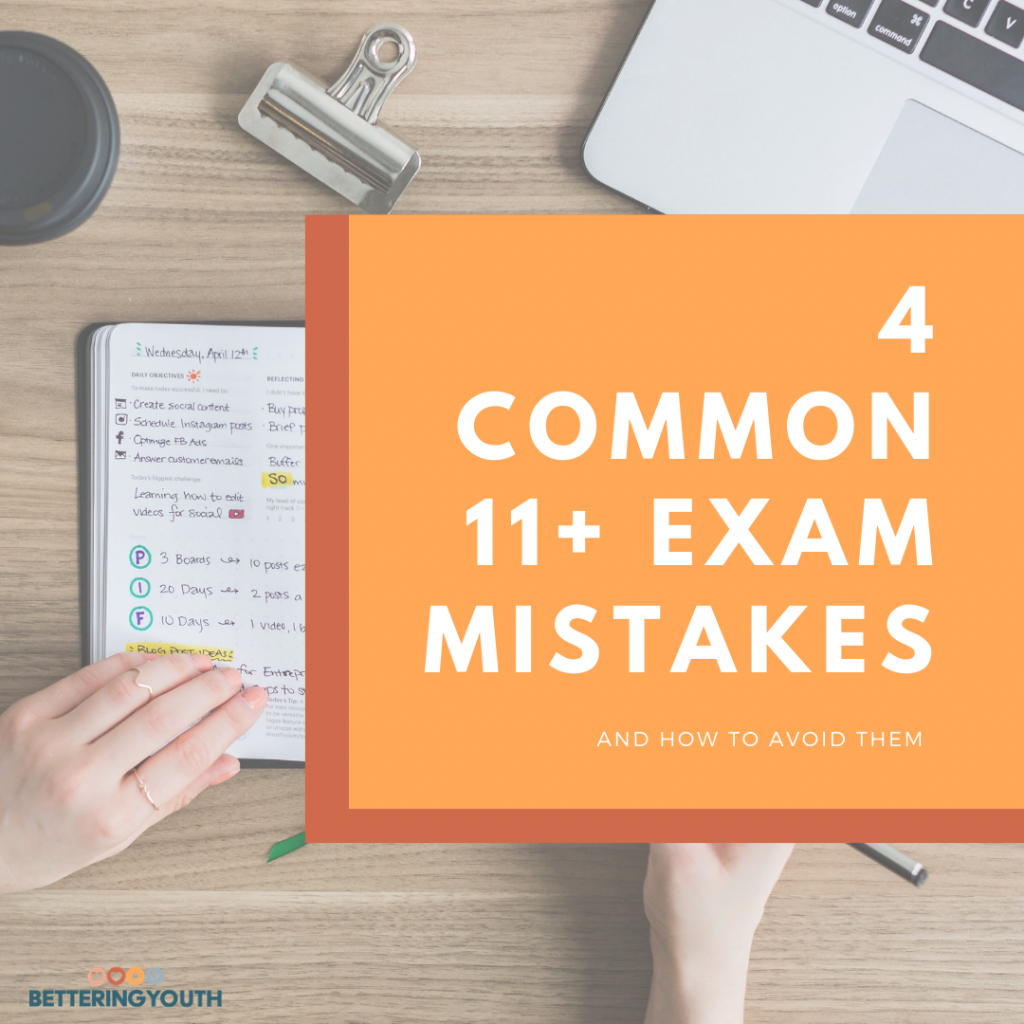This blog will help you support your child in preparation for the 11+ entrance exam. Over my career as a classroom teacher and professional tutor, I have come to recognise 4 common mistakes students make in exams. I endeavour to offer ideas to reduce these 11+ exam mistakes made whilst exam writing.

11+ Exam Mistakes
Running out of time.
Cause: Children can get stuck in the detail of the first few questions.
Solution: Practice keeping an even pace. You can divide practice papers up into parts. Allot only 5-10 minutes per section, then allow time for review at the end. Or have a timer go off every 10 minutes to help children become aware of their pace.
Cause: Getting stuck with a particular question
Solution: Practise techniques outside of testing scenarios to support students understanding. As a rule of thumb we suggest that if students get stuck: keep the working out on the page (it might award them part marks), circle the number and continue on only returning at the end.
Remember: 11+ is not just judging academic prowess. It’s also looking at the child’s ability to think under pressure, manage their time, and work efficiently. So know that the timing will be tight for most students. Therefore, getting used to this time pressure is key.
Pin It:
Lots of little mistakes
Core skills problems: When we’re under pressure, our gaps can become more apparent. As parents and tutors work to encourage students through the material quickly, they may rush away from the basics believing the child is secure here. Often times however, it is these basics that can cause the biggest issue.
Solutions: Adding to the pressure of writing an exam by punishing or berating children for “silly mistakes” will only make them more worried.
Practise techniques to lower anxiety and induce a calming sense of confidence. When you notice these smaller mistakes, don’t be afraid to go back to daily times tables practice. Or if a child has made a mistake in a multi-step problem, have them review the problem and identify where their mistake was made. This will help with self-correcting skills.
Technique problems: Sometimes we simply draw a blank. For instance, forgetting how to add or divide fractions.
Solution: If you have identified this as a problem, take time to review these techniques outside of the exam revision environment. Finish the session with some examples that practise recall.
Obvious knowledge gaps: If within an exam paper you notice an obvious knowledge gap, don’t hesitate to pause the paper practicing and go over this skill thoroughly. There is no point in continuing to do papers if the child doesn’t feel secure in an element.
Literacy knowledge gaps or problems. Remember that the more pressured a child (or anyone!) feels, the less they’re likely to recall information. So focus on daily reading of classical texts, reading together to ensure thorough understanding, and creating a vocabulary dictionary that’s student led.
Pin It for Later:

Bettering Youth is a tutoring service based in Windsor, UK. Our tuition services support children academically and emotionally. We work with students year 1 – GCSEs in Maths, English and Science. Our tutors specialise in boosting confidence, reducing overwhelm and preparing students for exams.

Pingback: 6 Powerful Steps to Support Reluctant and Struggling Readers - Bettering Youth
Pingback: How to Stand Out in an Entrance School Interview - Bettering Youth
Pingback: Studying 101: 3 Popular Time Wasters for Studying - Bettering Youth
Pingback: Overcome 11+ Common Exam Errors | Insights from Mock Exams